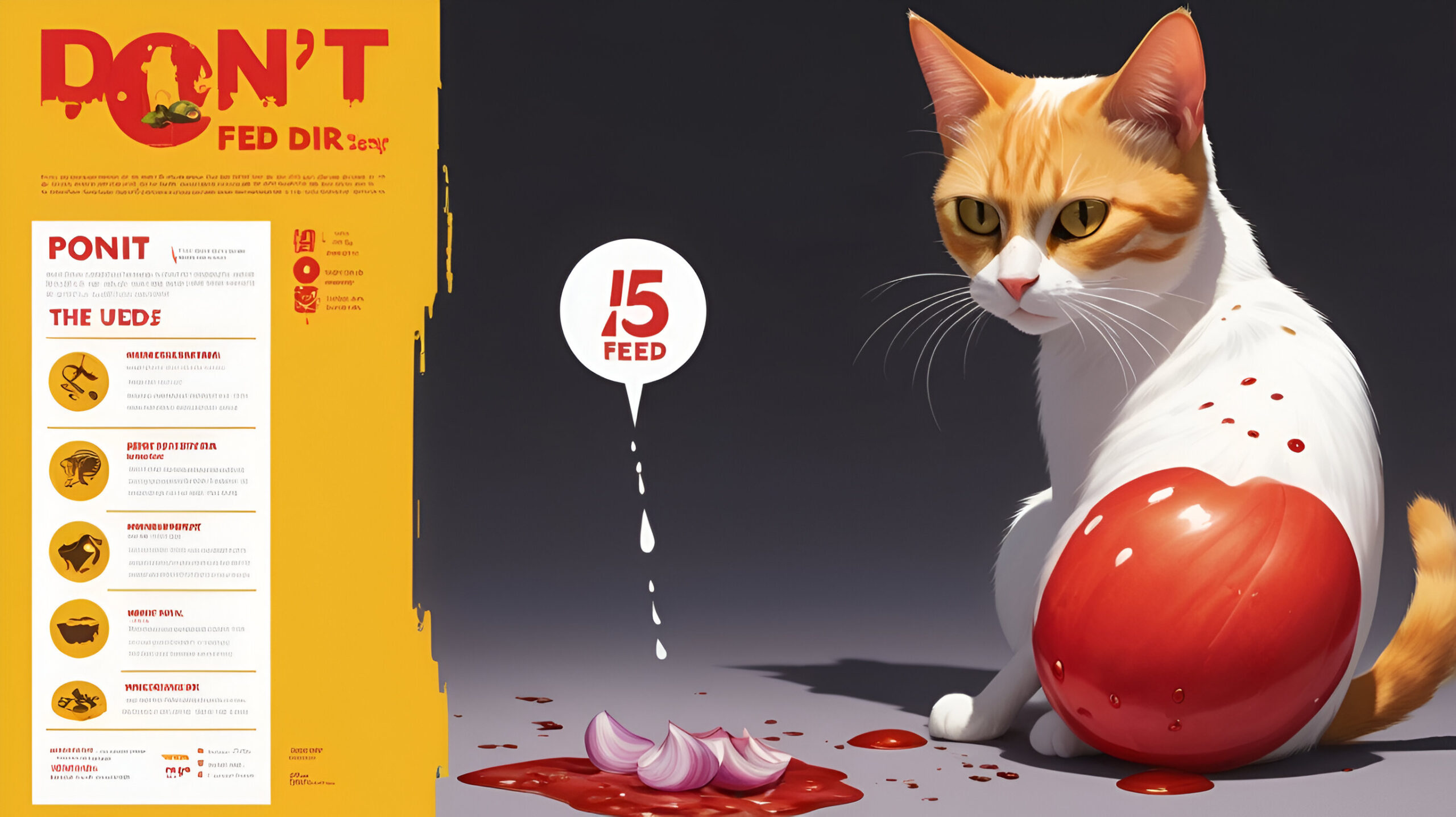Cats are naturally curious, often drawn to the foods we eat. While it may be tempting to share a bite with your feline friend, some human foods can be harmful—or even deadly—to cats. As a responsible pet owner, understanding which foods to avoid is crucial for your cat’s well-being. In this blog, we’ll highlight 10 dangerous foods for cats and suggest safer alternatives to keep your furry companion both happy and healthy.
1. Chocolate
Why It’s Dangerous: Chocolate contains theobromine and caffeine, which are toxic to cats. Even small amounts can cause vomiting, diarrhea, rapid breathing, and seizures.

Safe Alternative: Offer cat-safe treats specifically designed for felines, such as freeze-dried meat or fish treats.
2. Onions and Garlic
Why It’s Dangerous: Onions, garlic, and other members of the allium family can damage a cat’s red blood cells, leading to anemia. Symptoms include weakness, vomiting, and breathing difficulties.
Safe Alternative: Stick to cat-friendly vegetables like steamed carrots or green beans in moderation.
3. Dairy Products
Why It’s Dangerous: Contrary to popular belief, most cats are lactose intolerant. Consuming milk, cheese, or yogurt can lead to digestive issues like diarrhea and stomach cramps.

Safe Alternative: Opt for lactose-free cat milk or plain, unsweetened yogurt in small amounts.

4. Grapes and Raisins
Why It’s Dangerous: Grapes and raisins can cause kidney failure in cats, even in small quantities. Symptoms include vomiting, lethargy, and decreased appetite.
Safe Alternative: Offer small pieces of cat-safe fruits like cantaloupe or blueberries as an occasional treat.
5. Caffeine
Why It’s Dangerous: Caffeine, found in coffee, tea, and energy drinks, can overstimulate a cat’s nervous system, leading to rapid heart rate, tremors, and seizures.
Safe Alternative: Fresh water is the best beverage for your cat. You can also try cat-friendly herbal teas (without caffeine) in tiny amounts.
6. Alcohol
Why It’s Dangerous: Alcohol is extremely toxic to cats and can cause vomiting, disorientation, and even coma or death in severe cases.

Safe Alternative: Always keep alcoholic beverages out of reach and provide fresh water or cat-safe broths instead.
7. Raw Eggs, Meat, and Fish
Why It’s Dangerous: Raw eggs, meat, and fish can contain harmful bacteria like Salmonella or E. coli. Raw fish also contains an enzyme that destroys thiamine, an essential B vitamin for cats.
Safe Alternative: Cooked, unseasoned meat or fish (without bones) is a safer option. Always remove skin and bones to prevent choking hazards.
8. Xylitol
Why It’s Dangerous: Xylitol, a sugar substitute found in gum, candy, and some baked goods, can cause a rapid release of insulin in cats, leading to hypoglycemia (low blood sugar).
Safe Alternative: Stick to cat-specific treats or small amounts of plain, cooked meat.
9. Bones
Why It’s Dangerous: Cooked bones can splinter and cause choking, intestinal blockages, or internal injuries.
Safe Alternative: Provide your cat with safe chew toys or dental treats designed for felines.
10. Dog Food
Why It’s Dangerous: While not toxic, dog food lacks the essential nutrients cats need, such as taurine, which is vital for their heart and vision health.
Safe Alternative: Always feed your cat high-quality, species-appropriate cat food.
Tips for Keeping Your Cat Safe
- Store Food Securely: Keep dangerous foods out of reach in sealed containers or cabinets.
- Educate Your Family: Ensure everyone in your household knows which foods are off-limits for your cat.
- Monitor Treats: Always check the ingredients of commercial cat treats to ensure they’re safe.
- Consult Your Vet: If you suspect your cat has ingested something toxic, contact your veterinarian immediately.
Conclusion
While it’s natural to want to share your food with your cat, it’s crucial to prioritize their health and safety. By avoiding these 10 dangerous foods and offering safe alternatives, you can ensure your feline friend stays happy and healthy. Remember, when in doubt, consult your veterinarian for guidance on your cat’s diet.
Related Articles:
- The Complete Guide to Litter Box Training: Tips for a Stress-Free Experience
- Understanding Cat Behavior: Decoding Your Cat’s Body Language and Sounds (2025 Guide)

[…] 10 Foods That Are Dangerous for Cats (And Safe Alternatives) […]